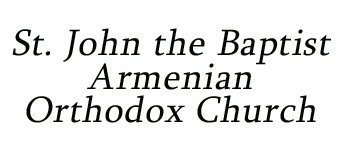FEAST OF TRANSFIGURATION
Sunday, July 16, 2023
This Sunday, July 16, the Armenian Church celebrates one of her five Tabernacle Feasts—Transfiguration (Aylagerbutyoun / Vartavar). The Feast of Transfiguration (also known as Baydzaragerbutyoun) is celebrated fourteen weeks after Easter, and therefore can fall between June 28 and August 1. It commemorates an episode in the New Testament recorded by Matthew, Mark, Luke, and Peter.
The Transfiguration took place on the “holy mountain” (believed to be Mt. Tabor) where Jesus had gone with Peter, James, and John to pray. As He was praying, “His face shone like the sun and His garments became white as light.” The Patriarch Moses and Prophet Elijah appeared at His side. It was at this moment that His appearance was “transfigured” revealing himself as God to His disciples as a voice from above said, “This is my beloved Son, with whom I am well pleased. Listen to him.”
As frequently done, a pagan festival was joined with this new Christian holiday. Vartavar (Festival of Roses) when Armenians would decorate the temple of the goddess Asdghig (goddess of love, beauty, fertility, and water) with roses, release doves, and engage in water games, was combined with the Feast of Transfiguration by St. Gregory the Illuminator.
The fifth century historian Yeghishe wrote the prayer that is read in the church on this feast day: “O Lord, bless the harvest of this year and defend from all the perils, and may Your right hand, O Lord, protect us for the whole year.”
Vartavar became a traditional day of pilgrimage to churches named in honor of St. John the Baptist. The most popular destination was the Monastery of Sourp Garabed of Mush, founded by Gregory the Illuminator in the province of Daron near Mush. (Garabed means Forerunner, referring to John the Baptist). The Monastery was large and expansive and built like a fortress in the mountains of the area, and more than 1,000 pilgrims could be accommodated. The Monastery was a stronghold of the Mamigonians, and in the latter part of the 19th century the monastery published Khrimian Hayrig’s newspaper, “Eagle of Daron.” In 1893, H.F.B. Lynch visited the monastery and later wrote an account of it in his book, Armenia: Travels and Studies, first published in 1901. The two-volume work was reprinted by the Prelacy in 1990.
After the extermination and deportation of the Armenians in 1915 the complex ceased to exist. The monastery was blown up by the Turkish army, and the ravages of time, weather and scavengers completed its destruction. In 1998 a group of Armenian pilgrims went to this site for the first time in years (the area was off limits for a long time). Since then other pilgrims have made the trip to this once large and thriving Armenian monastery that now consists of amorphous ruins.
This Sunday is the name day for those named Vartkes, Vartavar, Vart, Vartouhi, Alvart, Zevart, Nevart, Lousvart, Baidzar, Vartanoush, Vartiter, Varvar.


